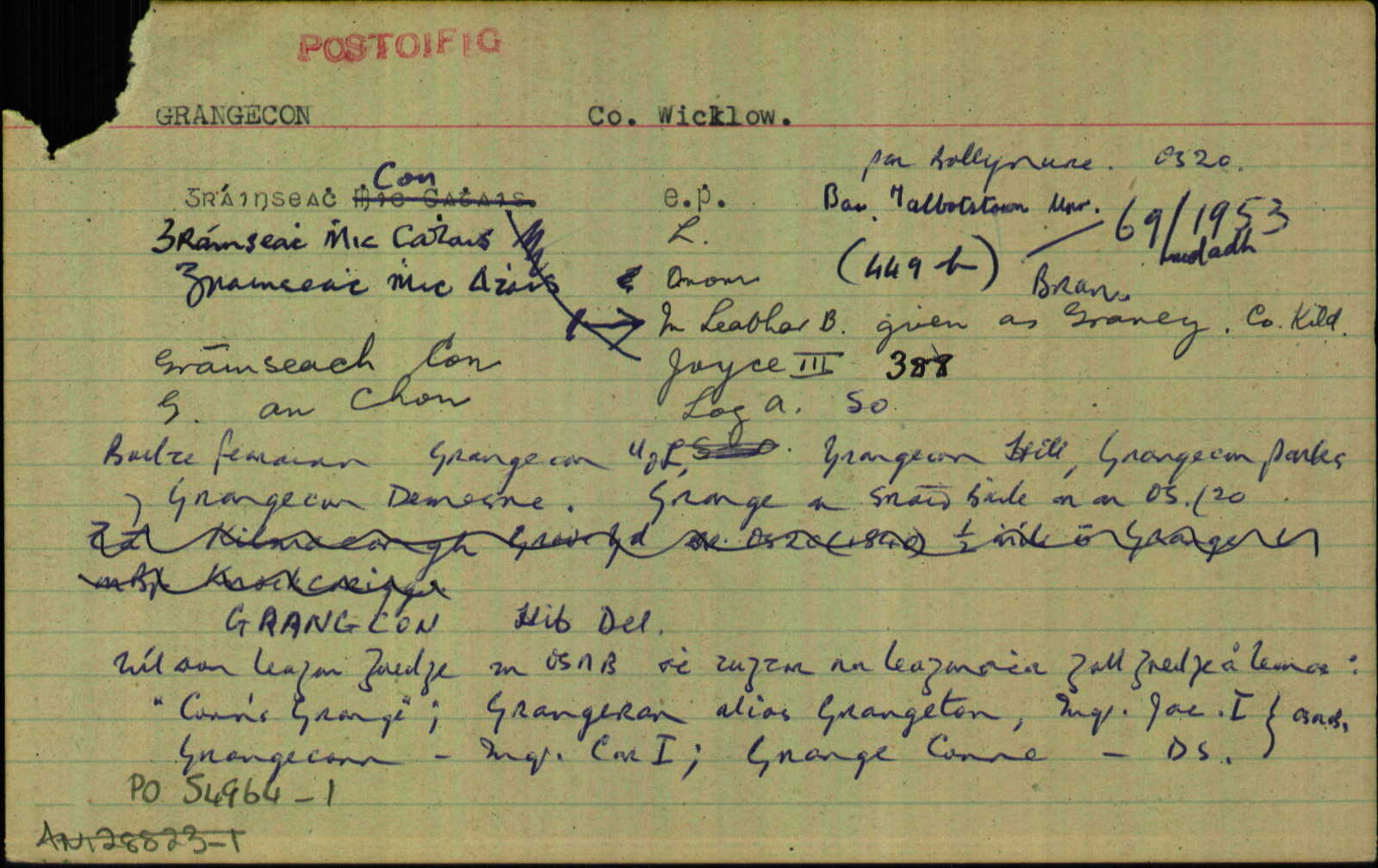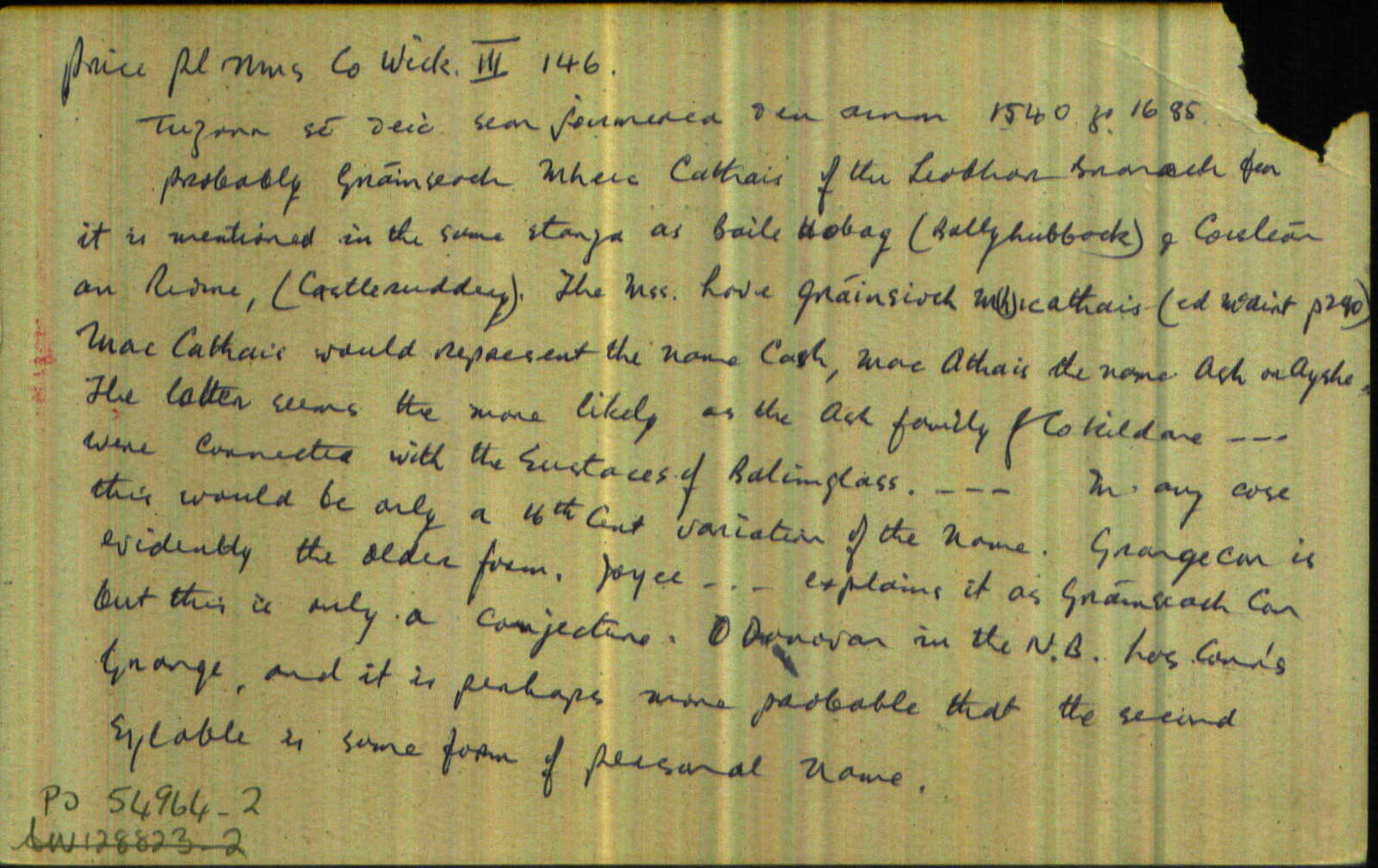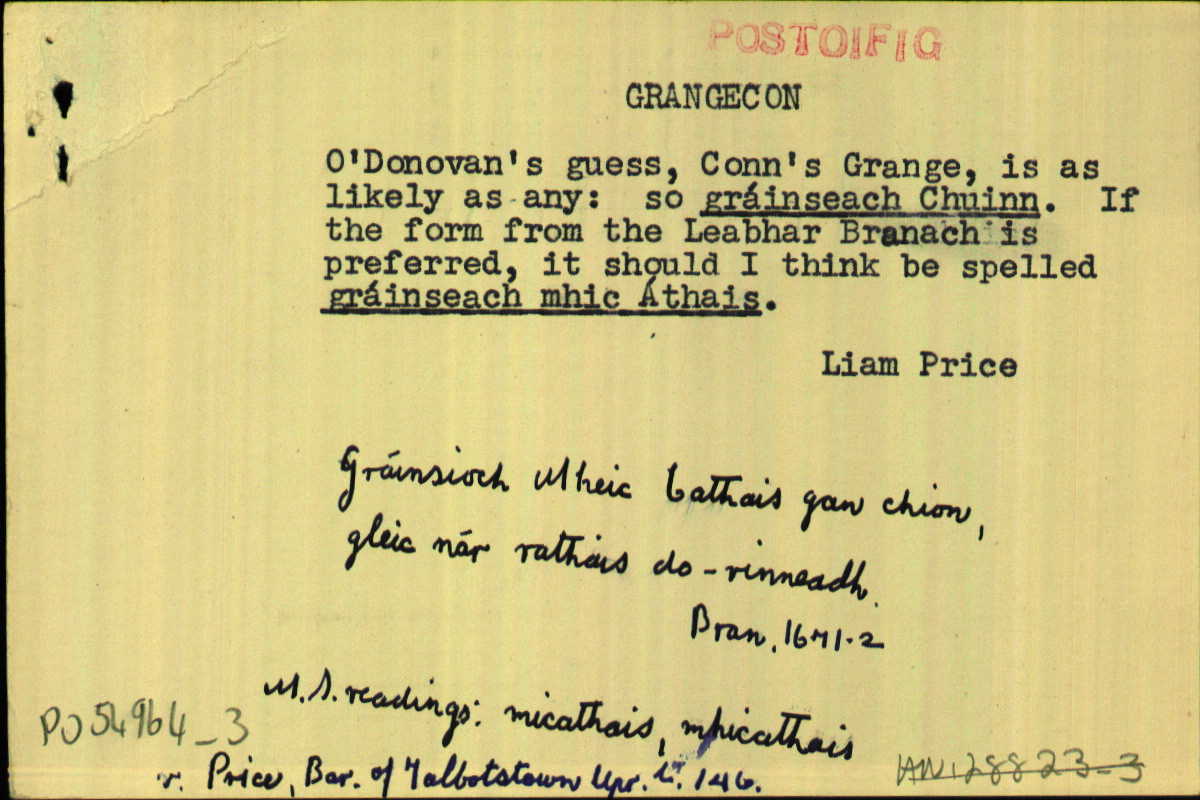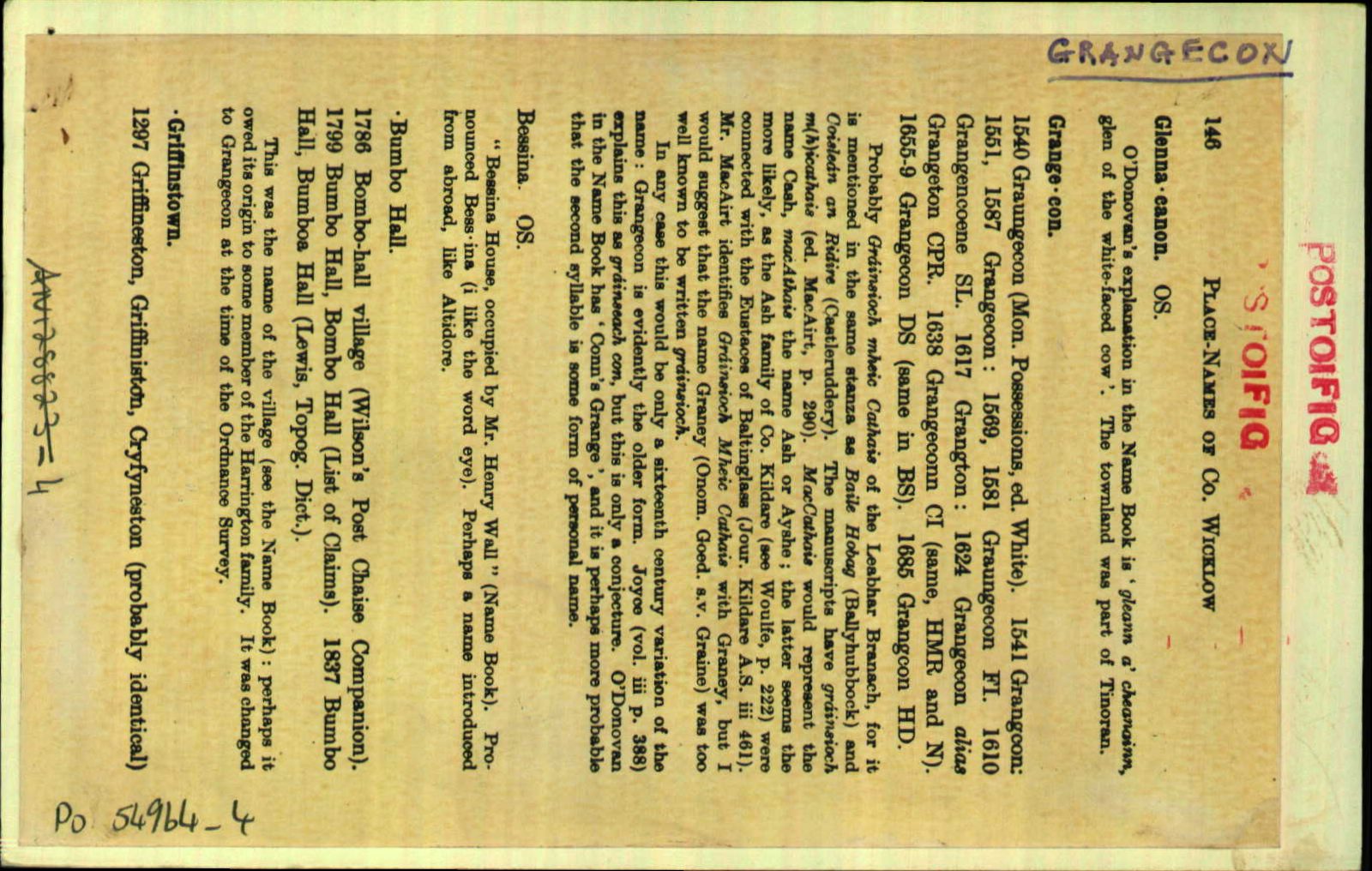Ordlathas
contae
barúntacht
paróiste dlí
ionad daonra
Ainmneacha eile
Ordlathas
contae
barúntacht
paróiste dlí
Nóta mínithe
- English
The Irish name Gráinseach Choinn was given official status with the passing of the Placenames Order of 1975 (see I.R. Uimh. 133/1975 – An tOrdú Logainmneacha (Foirmeacha Gaeilge) (Uimh. 1) (Postbhailte) 1975; http://www.irishstatutebook.ie/eli/1975/si/133/made/ga/print). This placenames order was based on research by the Placenames Office (forerunner of the modern Placenames Branch), which was subsequently considered and approved by the Placenames Commission, and after a period of public consultation it was signed into law by the Minister of the time.
An alternative Irish derivation Gráinseach Con “hound’s/hounds’ grange” is found in P.W. Joyce’s The origin and history of Irish names of places Vol. III (1920) p.388 (‘Grainseach-con “grange of the hounds”’) (see http://www.askaboutireland.ie/reading-room/digital-book-collection/digital-books-by-subject/geography-of-ireland/joyce-irish-names-of-plac/). Joyce’s Irish form was adopted by the Postal Service in Eóluidhe an Phuist [Eolaí an Phoist] (1937, 1955) (see: https://www.logainm.ie/en/inf/help-bib), and thereby gained some traction during the mid-20th century as the Irish name of Grange Con.
While much of the historical evidence is compatible with derivation from Joyce’s ‘Gráinseach Con’, it is of note that John O’Donovan in the Ordnance Survey Parish Name Book of 1838 explained Grange Con as deriving from ‘Conn’s grange’ (see: logainm.ie # 54969). (In this case, O’Donovan’s interpretation is not as authoritative as elsewhere given the fact that neither he nor his colleague Thomas O’Conor were able to collect a contemporary local Irish form of the name.) Liam Price appears to favour O’Donovan, observing that P.W. Joyce’s suggested ‘Gráinseach con’ was likely to be only a ‘conjecture … and it is perhaps more probable that the second syllable is some form of personal name’ (The Place-Names of Co. Wicklow (1967) p.146).
The historical forms of the name collected by researchers from the Placenames Office in the 1960s date from as early as 1540, but they did not provide sufficient evidence to differentiate between these two possible precursors, Gráinseach Choinn/Con, on linguistic grounds. In making their recommendation, therefore, the researchers took other factors into account.
First, the word gráinseach — which is an Irish borrowing of the English word grange “outlying farm, granary, monastic farm”, deriving from Norman French (see Logainmneacha na hÉireann IV: Townland Names of Co. Wexford, p.1002) — does not appear to be qualified by a term referring to animals in any of the many placenames in Ireland in which it occurs.
Second, given the origin of the borrowing gráinseach, this placename was self-evidently coined after the Anglo-Norman invasion. By this time it had become customary for Irish placenames containing a common noun as the qualifying element (as in Joyce’s hypothesised ‘Gráinseach Con’) to use the article. Thus, we would expect any placename of this period or later in which gráinseach “grange” was qualified by cú “hound” (gen. sg./pl. con) — already an unlikely scenario — to take the form Gráinseach *na Con “grange of the hound” or Gráinseach *na gCon “grange of the hounds”. There is no evidence of the article in the historical examples here.
On both points, the suggested ‘Gráinseach Con’ can be considered atypical of Irish place-names formed with the Anglo-Norman borrowing gráinseach. Derivation from Gráinseach Choinn was considered more likely to be correct, and that was the Irish form ultimately given official status.
Other surnames and personal names qualifying the element gráinseach in townland names include Gráinseach Uí Mhealláin (surname) and Gráinseach Ghormáin (personal name) in Kildare and Dublin, respectively (see further examples on logainm.ie).
(Seosamh Laoide suggested the Irish form ‘Gráinseach Mhic Cathais’ in Post-Sheanchas, the gazetteer he prepared for the Gaelic League in 1905 (revised 1911). This is doubtless based on the historical place-name ‘gráinsech mic athais’ which is found in an Irish poem dating from the sixteenth century (see Leabhar Branach: The Book of the O’Byrnes). The place in question does appear to have been located in west Wicklow, but the Irish name cannot be reconciled with the contemporary anglicised references to Grange Con and there is no other evidence to support Laoide’s identification.)
[CÓC]
Lárphointe
Airíonna
Aire: Cáipéisíocht áirithe chartlainne de chuid an Bhrainse Logainmneacha í seo. Léirítear anseo cuid de réimse thaighde an Bhrainse Logainmneacha ar an logainm seo thar na blianta. D'fhéadfadh sé nach taifead iomlán é agus nach bhfuil aon rangú in ord bailíochta déanta ar an bhfianaise atá ann. Is ar an tuiscint seo atá an t-ábhar seo á chur ar fáil don phobal.
Is féidir leas a bhaint as an ábhar cartlainne agus taighde atá curtha ar fáil ar an suíomh seo ach an fhoinse a admháil. Ní mór scríobh chuig logainm@dcu.ie chun cead athfhoilsithe nó saincheisteanna eile maidir le ceadanna nó cóipcheart a phlé.
Nasc buan
https://www.logainm.ie/1166981.aspxTuilleadh eolais faoin áit seo
Béaloideas
Tá ábhar a bhaineann leis an áit seo i gCnuasach Bhéaloideas Éireann (dúchas.ie):




